
Socks.
Turns out handknit socks are a thing, and I didn’t even know it for the longest time.
My stepfather had two pairs of handknit socks that he had for decades, carefully hand washing them and laying them flat to dry. He loved those socks and announced it unreservedly. When he was in failing health, I decided that I would knit my first pair of socks for him. I didn’t quite get the construction right and they were a bit floppy in the toes, but he wore them quite happily. I posted a picture of them on Facebook right after I finished them and, quite literally within a few minutes, a friend of my brother’s asked about them, inquiring if they were soft, because they looked as if they were really soft. I was so entertained at the speed and sincerity of the questions that I was off on my second pair of socks to send as a surprise to the inquiring gentleman, where they were so well-received his wife asked my sister-in-law, also a knitter, to teach her to knit some herself to keep him supplied. So it’s a thing.

Since then, I’ve knit a number of pairs, mostly for other people: a young friend, gravely ill, received a pair of cartoon-colored ones that appeared without announcement on her doorstep, my upstairs neighbor, who labored on restoring our oak front door, got a cozy alpaca pair in gratitude, the husband of a friend got another alpaca pair because I had knit a shawl for her wedding and fair’s fair, a young man departing our place of employment to go up on wind turbines got a heavy pair to keep him warm aloft, a colleague who had made me some jewelry just because got a pair in return. After my stepfather died, my mother returned his socks to me to pass on for someone else to enjoy; I deconstructed them and re-knit the same yarn into socks for her.


It took quite a number of pairs before any of them were destined for my feet and it was something of a revelation. So cozy, so (as noted above) soft; it was like wearing clouds on my feet. I now have assembled a bit of collection and keep myself well-supplied with sock yarn. There will always more feet in need, and it is a wonderfully portable project. I have been rewarded greatly with the pleasure people get from them, which is why I usually give them as a surprise (for my upstairs neighbor, I waited until I knew they were out, then ran upstairs, checking his shoe size and measuring soles to make sure to get the right fit. Stealth knitting.).
Here’s a gallery of feet and socks. If you’re a knitter or interested in more about the actual making of them, details follow the photos below.
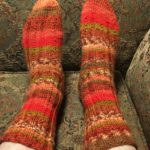
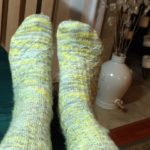
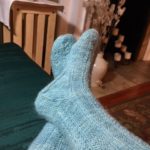

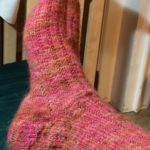

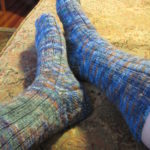
There are lots of opinions out there about knitting socks. You can start at the cuff and knit down to the toes, or start with the toes and knit up to the cuff. I prefer starting at the toes; others swear they will only go the other way. There are a variety of heels that can be used: short rows, eye of partridge, afterthought, and on and on. Some patterns tell you every stitch, others say things along the lines of “Use your favorite heel here,” assuming that everybody has a favorite heel.
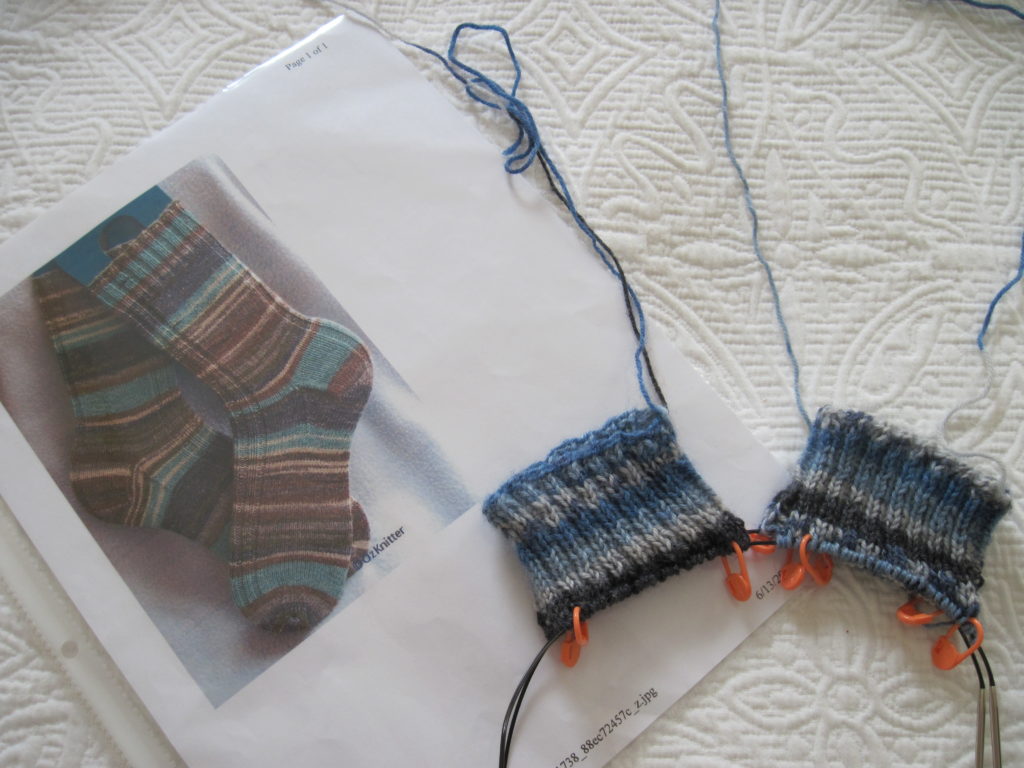
The traditional way is to use double-pointed needles to knit around one sock at a time. I could never get the hang of using DPNs; it all felt so awkward and like I was trying to play the bagpipes or wrestle an octopus. They can also be knit on circular needles. I like to knit both at the same time, on a long circular needle, using the Magic Loop method. The thought of doing the exact same thing twice makes me a little twitchy; knitters do refer to “second sock syndrome” in which a sock languishes waiting for a mate because the thrill is gone after the first one is finished. I use this two-at-a-time method for anything that needs two identical or similar pieces; sleeves, sweater fronts, two hats a time from the same patterns. The cast on for two-at-a-time knitting in the round can be found here.
As I said, I also much prefer knitting from the toes up; I never worry about running out of yarn. There is a spiffy cast on, called Judy’s magic cast on, that gets the toe stitches on the needles with no grafting the stitches together as with cuff-down construction. I also prefer doing my increases as M1, slanting the stitches towards each other on each side as a design element, rather than KFB (knitting into the front and back to make the increase); you may feel differently about that.
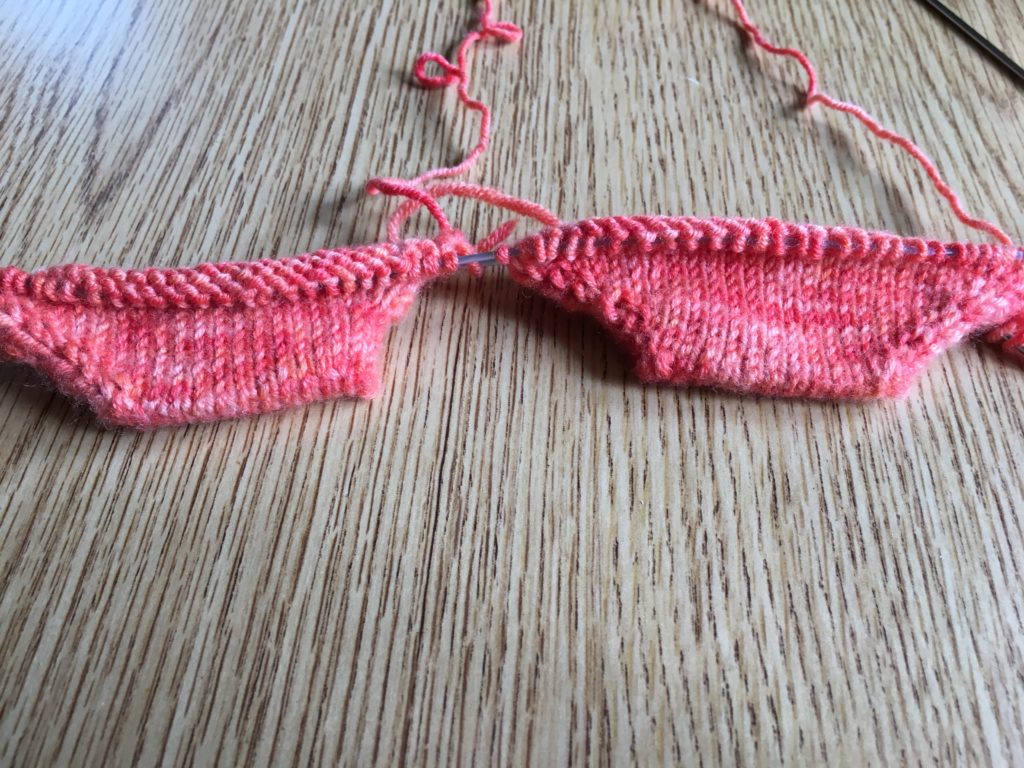

There are so many sock patterns out there to choose from, ranging from the simplest (often referred to as “vanilla” socks) that can let spectacular sock yarn take center stage to more complicated stitch patterns. If you’re a knitter and haven’t tried your hand at socks, give it a try. They’re a thing.
Vanilla
31 Jul 2020So pretty! Thanks for the information your article contains helpful post. I love knitted socks because its comfortable to the feet.
Handmade Bits and Bobs
31 Jul 2020Thank you! People do seem to appreciate having something both comfortable and something pretty on their feet!
Russell D McDowell
16 Dec 2018I love your blog, even if I don’t knit or garden. You write enough to engage but not so much as to overwhelm.
Handmade Bits and Bobs
18 Dec 2018Thanks! I didn’t want this to be a technical blog, but a just a way to share some projects and thoughts (and, with luck, encourage others to get their creativity on!).